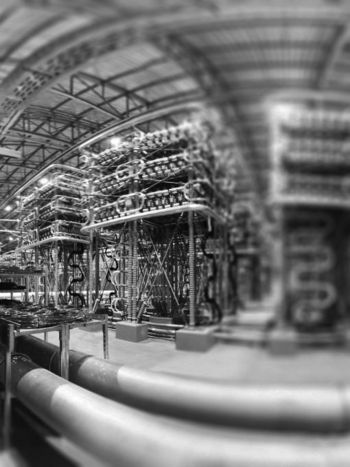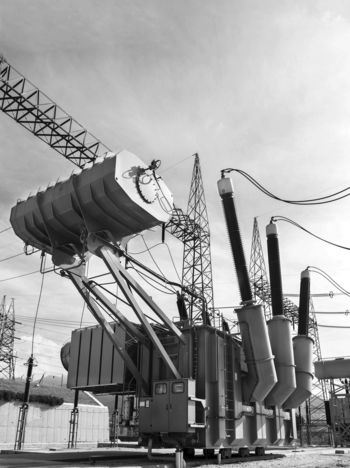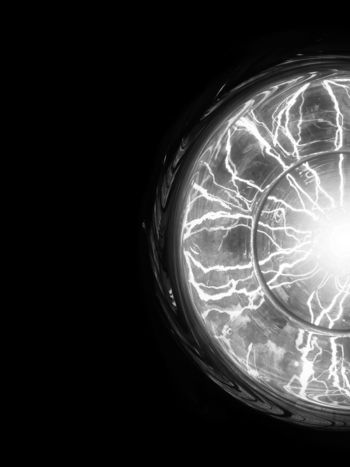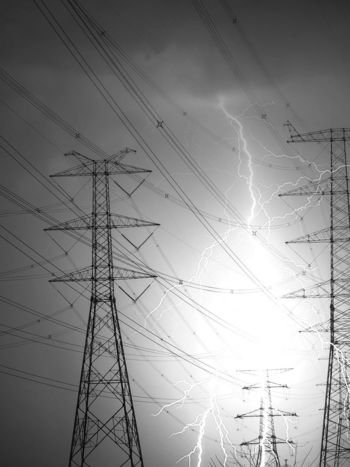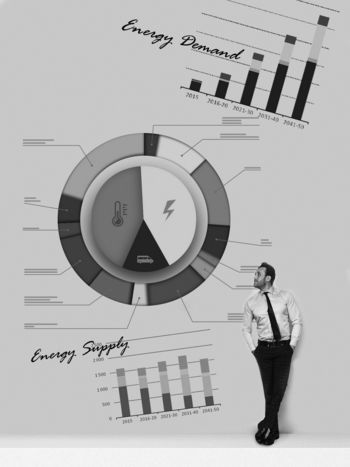Asset health indices for equipment in existing substations
Working Group B3.48 was created to produce a technical brochure describing a process to classify a wide range of substation assets in terms of their changing likelihood of having an in-service failure. This would be achieved by producing guidelines for companies to build credible Asset Health Indices (AHIs). It is important to indicate realistic routes whilst pointing out pitfalls.
Convenor
(IE)
J. BEDNARIK
Secretary
(GB)
A. WILSON
B3.AA4 Advisor
(NL)
J. SMIT
G. BALZER (DE), R. CLERC (FR), P. CREGO (ES), L. DARIAN (RU), A. GOYVAERTS (BE), N. KAISER (DE), C. KOMIYA (JP), A. LIVSHITZ (US), H. MANNINEN (EE), L. MCCARTNEY (IE), T. MCGRAIL (US), E. MORALES CRUZ (US), S. NOGUCHI (JP), A. PURNOMOADI (ID), P. STEFFENS (DE), B. VAN MAANEN (NL), T. WEHRSTEDT (DE), P. WERDELMANN (DE)
Corresponding Members: R. CORNELL (US), M. VERRIER (AU), A. KURZ (DE)
These AHIs should be the first step towards focused outcomes. Firstly, they can be used to create asset specific plans for maintenance, refurbishment and asset replacement. Secondly, they can provide resilience information on a functional basis through a network. Each is part of the asset management credo that all assets should have lifetime management plans to meet business objectives. The early chapters of the brochure describe the general approach suitable for any type of asset within a substation. In the Chapter 4 the methodology is taken and applied to individual asset types – from power transformers, circuit breakers, instrument transformers, etc.
The outcome here is to provide prioritised care plans for each of the asset group. Chapter 5 is important in that it considers critical issues when aggregating assessments in order to produce likelihood of failure in complete circuit ends, bays and eventually in complete substations – see Figure 1.
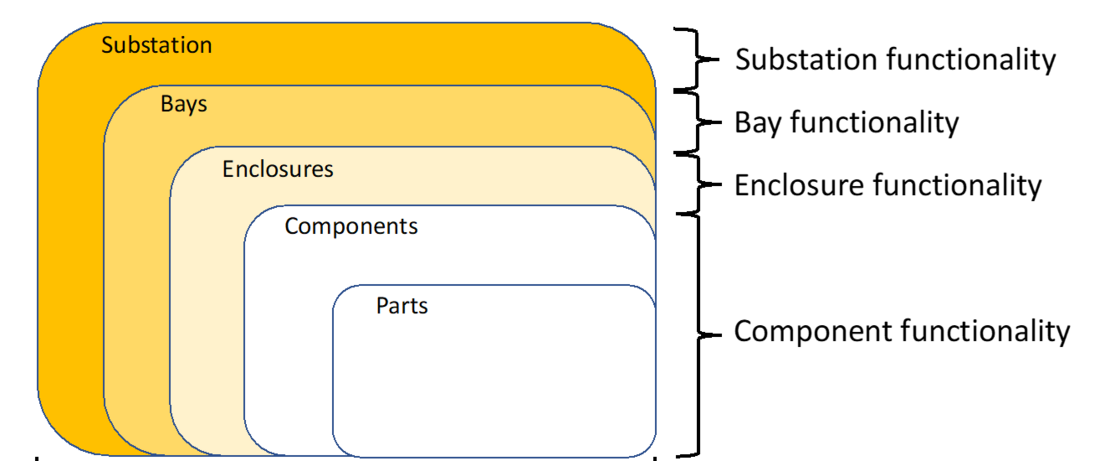
Figure 1 - Hierarchical layers within a substation
Introduction
Satisfactory performance of substation equipment is critical for any utility company. During their service life such assets transition from new to being aged by having one or more developing failure modes, and eventually reaching the failure point itself. The need is then to have the capability to identify the time frames for these transition stages. Age by itself, or time in service, is a poor proxy for identifying these time frames. More appropriate is the link to the onset of failure modes and an appreciation of the factors causing the rates of change in condition. This range of “failure-free periods” and consequential failure mechanisms require a different management practice from one that follows a simple time-based assignment applied to the whole asset class. One way of managing the assets is by using condition assessment, provided that it can be linked to the range of failure modes found to occur.
Asset lifetime
Experience has shown that even within comparable assets the rates of deterioration to be addressed, together with the time in service when failures occur are variable. The causes have been attributed in SC A2 and A3 reliability studies to the importance of several factors, such as quality of the design, manufacture, commissioning, and maintenance; also important are variations in use within their operational environments, see their references [1] and [2].
In this context, an in-service failure does not necessarily mean deterioration that creates the end of life. The deteriorated condition might be rectifiable with maintenance, refurbishment or repair. The end point for asset life is when these tasks cease to be effective. This could be when the damage is too great or too many functions have fundamental irreversible deterioration. Other decision points would include cost effectiveness of repair compared to replacement, when ratings no longer meet the circuit needs or where there are safety and environmental impact risks.
In this way the management of assets is more to identify “failure-free life periods” and this is not necessarily the same as a re-defined asset life.
The role of asset health indices
One method of dealing with widely varying asset performance that is more related to the design and use of individual assets is to apply an asset health index (AHI) methodology. Several companies and utility groups have described their AHI development, generally based upon identifying failure modes and related diagnostic indicators. An appendix in the brochure describes some of this experience. An important part of the process is an audit and ongoing continuous improvement of the methodology. This aspect is critical to ongoing use of any selected methodology yet is generally not well reported. One exception is experience included in CIGRE SC A2 sessions. Since the mid-1990s a large UK TSO has used an AHI based upon condition assessment for identifying transformer replacement needs. It has audited and evolved the methodology by routinely performing forensic examinations on any transformer removed from service [3], and [4].
The proportion of unexpected failures present a challenge to the AHI approach and it is important to establish if these require a refinement of the AHI methodology or a fundamental limitation.

Table 1 - Example of AHI categories
The role of an AHI is, therefore, to divide the asset list into a number of condition categories such as the five shown in Table 1. This example is the one developed within WG B3.48 based upon experience of members and of publications elsewhere. The time scales need to be user defined and be specific to the asset class and the active failure modes identified. In the A2 Technical Brochure TB 761 [5] a more general description was described, and this is very similar to the one shown in Table 1, although not providing any of the time frames essential for application of the AHI methodology.
Yet it is important to establish a link between:
- an assessment
- an action required within a time scale
Most assets assessed in this way will be in groups 1 or 2 and require no specific action. Those in groups 3, 4 or 5 would be assessed and given their own action plan in terms of the particular failure mode identified, its general rate of progression, its condition-based rate of progression, and its criticality exposure.
Creating the AHI methodology
Creating a condition linked methodology usually starts by working from the asset register, which is a simple list identifying the company assets. The register identifies the asset type, design information, location and function. The AHI modification includes an assessment of condition and implied likelihood of an in-service failure within in a timescale for each asset in the register. In this context, the modified list is then referred to as an Asset Health Index (AHI). By associating a future time scale alongside the detected deterioration, the outcome can then be used as the best tool to identify timing for interventions to reduce the likelihood of such an in-service failure. Such interventions include asset replacement, repairs, refurbishments and maintenance.
To apply these decision processes involves using Failure Mode, Effects and Analysis (FMEA) to identify relevant failure modes and corresponding diagnostic indicators capable of assessing the condition and likelihood of failure within a period. It evolves the planning of interventions towards a set of plans for managing each asset, a process consistent with international asset management practice. Each failure mode is identified and then the relating diagnostic indicators. The ongoing application reverses the sequence, with test results collected and related back to each failure mode, see Figure 2. The point here is that the interpretation of the test data needs to be done within the terms of the failure mode. For example, some test results can be indicators of several failure modes, but the results need to be interpreted differently and relative to each failure mode. Test results are not failure modes and always need to be interpreted within their relationship to failure modes and predicted rates of progression.
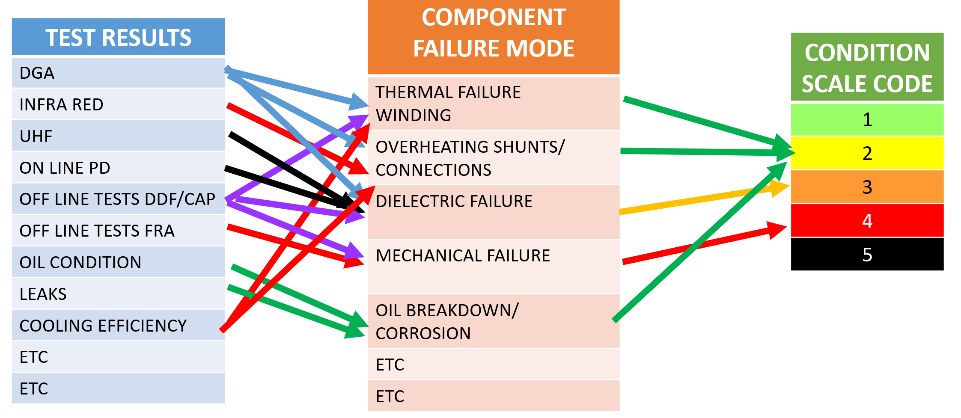
Figure 2 - Example of matching test results to failure modes and AHI scale codes
The AHI is built from scale codes that are in turn built from these assessments of each of the critical failure modes. See Figure 2 for an example. It is often useful when undertaking these tasks to have identified “failure mode susceptibilities”. These could be knowledge of a poor performing design or extreme operating environment. These susceptibilities can be included in the analysis as a clue to identify the known weaknesses but are not part of the analysis. This is shown in Table 2.
It is common that some failure modes are not being assessed, or the results are aged. The result is then identified as “restricted” and the tabulation needs to reflect this. Scale codes shown in this Table 2 illustrate:
- use of a log base 3 allowing aggregation as shown in column 9,
- an alternative is a method described in TB 617 and this also is shown in column 10, and
- a linear 1-5 score to yield a maximum scale code value as in column 11.
Some granularity can be achieved, at least at component or asset level by aggregating scale code scores for each failure mode and this is possible with an exponential score or the TB 761 method. However, this approach is not without its problems when results from many modes from many assets are aggregated to produce a bay or substation AHI. This is an aspect discussed at length in Chapter 5 of the brochure and concludes with the appreciation that there is no single approach to scoring AHI; many will work and need to be chosen to suit the application.
The aim is not to wait until failure but to intervene. Any possible intervention can be cost benefit analysed and the benefit in scale code included, here in column 12. The end result may be a statement of the assessment of failure mode with the poorest assessment in terms of scale code scores.

Table 2 - Creating the AHI
Conclusions
- The AHI approach is applicable where there is a link through condition indicators to the symptoms of failure modes and the timescales for the transition between being sound to one being likely to cause an in-service failure.
- Any AHI process should follow an asset through its life by identifying changing likelihoods of failure with their associated time periods- and so creating an action plan for an intervention – maintenance, repair, or replacement.
- The resulting set of AHIs should be calibrated for time: the AHI must uniformly reflect the same urgency of intervention. All assets with the same score should have the same timescale for intervention, irrespective of failure mode or asset type, otherwise there is confusion in applying AHIs consistently.
- A ‘poorer’ AHI should always reflect a more urgent condition. This means that where several failure modes are being assessed and the scores aggregated the method of aggregation should not produce any violation of this principle.
- The AHI methodology can be used at component, asset, bay and substation level, incorporating a wide variety of asset types and for a range of outcomes – maintenance and replacement planning.
- [1] “Transformer reliability survey” CIGRE A2 brochure No 642, 2015: https://e-cigre.org/publication/642-transformer-reliability-survey
- [2] "Final Report of the 2004 - 2007 International Enquiry on Reliability of High Voltage Equipment; Part 2 - Reliability of High Voltage SF6 Circuit Breakers” CIGRE A3 brochure No 610, 2012: e-cigre.org/publication/610-offshore-generation-cable-connections
- [3] “Transformer life prediction using data from units removed from service and thermal modelling” P. Jarman, R. Hooton, L. Walker, Q. Zhong, T. Ishak and Z. Wang, CIGRE-Session, A2-212, Paris, 2010: e-cigre.org/publication/A2-212_2010-transformer-life-prediction-using-data-from-units-removed-from-service-and-thermal-modelling
- [4] "Transformer Asset Health Review: Does it work?" R. H. Heywood, P.N. Jarman and S. Ryder CIGRE Session Paper A2-108, Paris, 2014: e-cigre.org/publication/A2-108_2014-transformer-asset-heath-review-does-it-really-work
- [5] “Condition assessment of power transformers”, CIGRE A2 Brochure, TB 761, 2019: e-cigre.org/publication/761-condition-assessment-of-power-transformers

